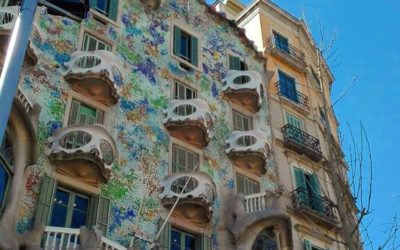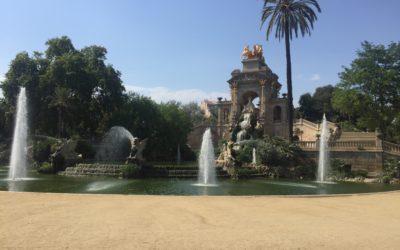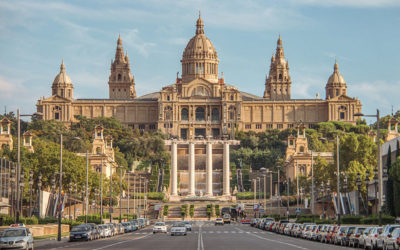Barcelona – History Guide
If you want to see the most beautiful places in a city you want to visit, first you have to explore its history. Every place you go has a different history, national heroes, and architecture. Some of the cities are built with bureaucratic style, others have evolved and have a lot of buildings in a modernist style that can be very alluring for the tourists. But the most interesting cities are the ones that have a bit of everything. Some places have buildings from distant history and futuristic buildings of talented architects.
We pursued understanding of our point through a worldwide journey which culminated in our systematic selection of one city we wanted to explore.
The History of Barcelona
We should begin our tour by understanding the historical background of this excellent city.
The creation of this urban center holds two renowned legends which visitors can learn through traditional accounts. Many believe that Hercules founded the mythical city but locals credit Hercules Barca and his son Hannibal who built it in the third century BC. The city received its Roman title which became Colonia Julia Augusta Faventia Paterna Barcino representing a small urban community during that period. The colony transformed into a good condition which earned preferable treatment and immunity against various imperial responsibilities.
The remains now show throughout different sites since their initial discovery. We will discuss certain remains later in this text while others are presented at this present moment. Belonging to Roman times the graveyard relics show at Gratiot MASVA Museum together with the historic center of Barri Gòtic and more. The counts positioned themselves prominently throughout this colony when the year reached 985. Public needs drove Barcelona to found its first European bank which officially started operations in 1401. The facility continues to stand as Europe’s oldest banking institution until today. When industrialization began manufacturers experienced significant advantages by living in the province. During the Spanish Civil War anarchist observers focused their attention on Barcelona. The post-war migration tsunami concluded with Barcelona becoming Spain’s second largest metropolis. The city achieved its revival in 1992 after it hosted the Olympic Games.
Our brief overview of Barcelona’s historical past begins before we embark on a city tour showing the essential sites from Barcelona’s past.
Historical Tour Around Barcelona
-
Sagrada Familia
The Catalan architect Antoni Gaudi created the outstanding structure that we call Sagrada Familia. Gaudi obtained building control of this structure in 1883 after its initial startup in 1882 thus reorienting its design toward blending Gothic elements with Art Nouveau curves. Gaudi demonstrated great devotion to this church yet the building existed only as a work in progress when he passed away. Slow development has been the outcome since Gaudi passed away. The Spanish Civil War alongside private donation dependence remain the principal factors behind construction delays. Even though building work stopped midway this church has earned status as a UNESCO World Heritage Site. Experiencing a new timeline in 2010 the construction team at Sagrada Familia provided a finishing date of 2026 for its completion marking Antoni Gaudi’s death centenary.
-
Padellas’s House
This Gothic Private Palace began construction in 1497 followed by an extension phase that ran until 1515. Naturalist architect Gaudi constructed this building initially at 25 Mercaders street in Barcelona. Royal counsellor Joan d’Hostalric-Sabastida I LlullIn probably initiated the work according to historical records. The building underwent disassembly in 1931 when stone-by-stone transport to Plaça del Rei occurred following the construction of Via Laietana. The Barcelona City Museum established installations at Padellas’s House in 1943.
-
Temple of Augustus in Barcelona
People went to this temple to worship Emperor Augustus. One of the most popular attractions in Barcelona formerly served as the Roman ruler Barcino’s temple. Discovery of Temple Augustus remains did not occur until the 19th century when builders used three of its columns at the Centre Excursionista de Catalunya construction site. Architect Antoni Celles produced both a drawing and outline of the temple through his completed document during 1830. In addition to the temple’s dedication to Augustus he formally documented its design features. The temple featured eleven columns distributed between each wing and corner pillars while measuring 35 by 17.5 meters across its dimensions. The temple sat on a platform basis.
-
Park Guell
The public park system includes numerous gardens and architectural elements within its establishment. It was built between 1900 and 1914. The park gained public park status in 1926 before UNESCO declared it a World Heritage Site in 1984. The famous Catalan architect Gaudi designed the building at which time he integrated organic forms together with his imaginative and creative freedom to finish the project. According to the guidelines this remarkable building that Gaudi constructed for Güell represents his interpretation of the Temple of Apollo at Delphi.
-
Villa Joanna
Built during the 16th century this villa has withstood the test of time. Joanna kept its name from the family Miralles who owned and named it. The ownership of this villa passed to become a specialized education establishment staffed by real professionals including Dr. Maria Jesús Bellido and Pere Barnes I Giol. A facility which initially served deaf and dumb students became a mental health institution for special patients after the nearby school shut down in 1925. Since 2014 the facility became accessible to writers for short-term stays.
-
Аir – raid Shelters
The shelters named bomb shelters received construction in 1924 before World War II began. These facilities functioned both as sanctuary for civilians and operated as broken-down buildings during times of war and hostile aerial attacks. Single occupancy served as the primary distinction between air raid shelters and their cells.
Just Outside of Barcelona!
-
Tarragona
The city with origins in the Phoenician epoch spread across the eastern sections of Spain. Barcelona sits just 98 kilometers away from the city. Tarragona gained importance as a Roman military zone during the Second Punic War before it became Hispania’s principal military bastion. Tarragona achieved status as Hispania’s capital during the ensuing 200 years although the city’s official name remained Torak at that time. Emperor Augustus came to live in this city through which he managed the empire before it earned its status as a colony at the pinnacle of Roman urban hierarchy. Roman ruins inside the city of Tarraco gained UNESCO World Heritage Site status.
-
Cartagena
After its conquest by Roman general Scipio in 209 BC this city received the name Cartago Nova. The city now carries the name Cartagena while existing as part of South East Spain near the coast. The city operated as the principal attack platform for Carthagena during its invasion of Spain. The strategic location of the port brought this city into prominence during 228 BC. After gaining control of the city the conqueror Scipio renamed it Qart Hadasht which meant “New City after Carthage.” Over time many alternative names were used for the settlement. Today Cartagena features numerous city ruins with one of its most outstanding structures being the theater built from the 5th to 1st century. Strategic development commenced in the 3rd century AD when the theater space became the foundation for market construction. Builders exposed the theater during excavation activities in 1988 and by 2003 public observation became possible. The museum received the theatre addition it consisted of five years later.
-
Santiago de Compostela
The Cathedral stands in northwest Spain as a representation of a temple dedicated to one of Jesus’ apostles. This cathedral welcomes all Catholic believers because it functions as an important Catholic pilgrimage site ranking among the top three for Christians and Catholics. According to local legend the killing of one of Jesus’ apostles took place near this cathedral area. Archaeologists discovered a forgotten tomb site in 814 when King Alfonso II constructed a chapel on top of these remains. A short period after the original construction the builders established the first church at this site. Some time later in 997 the Catholic church faced destruction by invading forces who robbed its gates and bells to build the Aljama Mosque at Cordoba.
-
Salvador and Santa Maria Cathedral
In 1281 ob chaste acquired its main cathedral church status while the site originally functioned as a parish church built upon Aljama mosque territory. By decree from Pope Julius II the church earned its position as a cathedral in 1510. The cathedral possesses both a Latin cross layout and follows the style of Catalan – Gothic architecture. Additional chapels were added through the 15th and early 16th centuries to this section of the building.
Table of Contents




